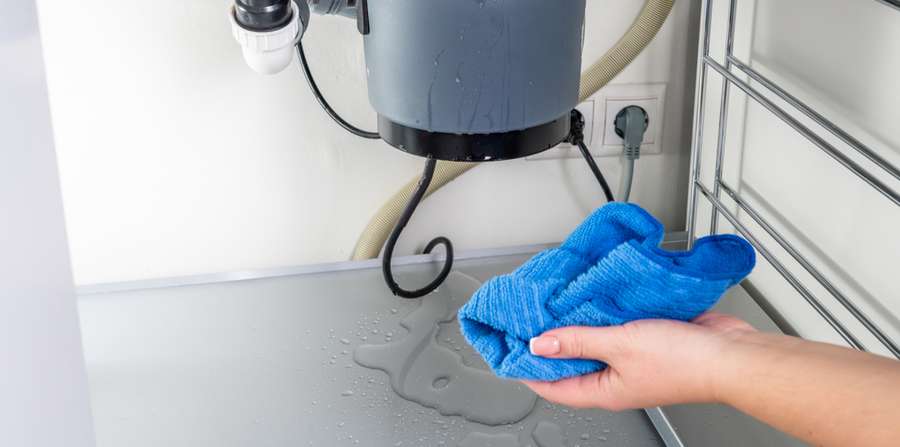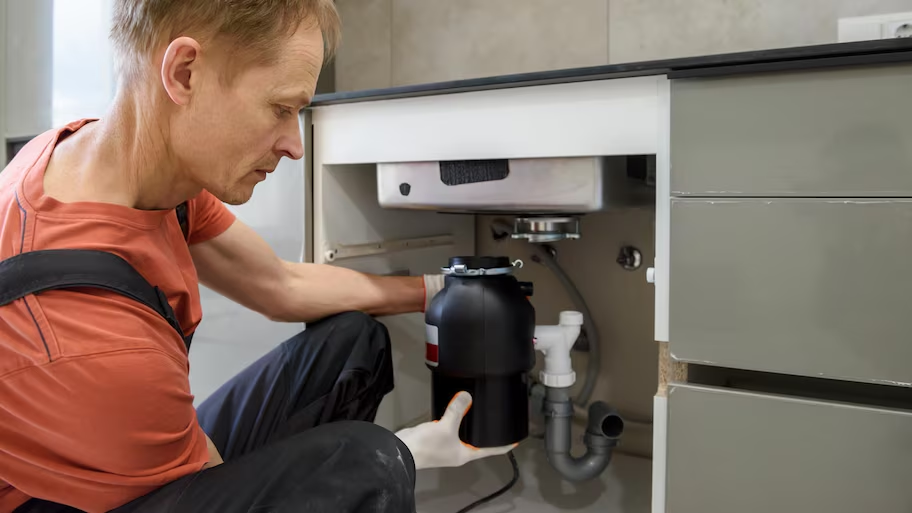The article below about The Handy Guide To Fixing Your Garbage Disposal Leaking is pretty much captivating. Don't skip it.

Garbage disposals are crucial kitchen devices that aid in dealing with food waste effectively. However, a leaking waste disposal unit can be a discouraging and untidy problem to deal with. The good news is, lots of leaks can be taken care of easily with a couple of basic steps. In this write-up, we will review how to take care of a leaking garbage disposal successfully.
Intro
Garbage disposals are set up under cooking area sinks and are designed to shred food waste into smaller sized pieces, permitting it to pass through the plumbing system easily. While these devices are typically reliable, leaks can happen with time as a result of wear and tear, loosened links, or damages to the device.
Typical Causes of Leakages in Waste Disposals
Worn Seals and Gaskets
Seals and gaskets play an essential role in avoiding water from leaking out of the waste disposal unit. With time, these elements can degrade, resulting in leakages around the disposal system.
Loose Connections
The links between the waste disposal unit and the plumbing system can come to be loosened in time, creating water to leak out throughout operation.
Splits or Holes in the Disposal System
Physical damages to the waste disposal unit, such as cracks or holes in the real estate, can additionally lead to leakages.
Recognizing the Source of the Leakage
Prior to trying to fix a leaking garbage disposal, it is essential to identify the source of the leak. This can normally be done via aesthetic inspection or by conducting simple examinations.
Visual Examination
Evaluate the waste disposal unit system meticulously for any kind of indications of water leakage. Pay close attention to areas around seals, gaskets, and link points.
Examining for Leaks
One method to evaluate for leakages is by running water with the disposal unit and looking for any type of visible indications of leakage.
Devices and Materials Needed for Fixing a Leaking Garbage Disposal
Prior to beginning the repair procedure, gather the needed devices and materials, including a screwdriver, flexible wrench, plumbing's putty, substitute seals or gaskets, and epoxy or patching product for repairing cracks or openings.
Step-by-Step Guide to Dealing With a Dripping Garbage Disposal
Switch off the Power
Prior to trying any repair work, make sure that the power to the waste disposal unit system is switched off to prevent the risk of electric shock.
Locate the Leakage
Recognize the specific area of the leak and identify the cause.
Tighten up Links
Utilize a wrench to tighten any type of loosened links between the disposal unit and the pipes system.
Replace Seals or Gaskets
If the leakage is because of worn seals or gaskets, get rid of the old parts and replace them with brand-new ones.
Patching Splits or Openings
For cracks or openings in the disposal system, use epoxy or an ideal patching material to secure the damaged location.
Evaluating the Waste Disposal Unit After Repair Service
Once the fixing is total, evaluate the garbage disposal by running water through it to ensure that the leakage has been fixed.
Preventive Maintenance Tips to Stay Clear Of Future Leakages
To stop future leaks, it is important to carry out normal maintenance on your waste disposal unit. This consists of maintaining it tidy, staying clear of placing non-food things or tough things down the disposal, and occasionally looking for leaks or other issues.
Final thought
In conclusion, repairing a leaking waste disposal unit is a reasonably simple process that can be finished with fundamental tools and materials. By complying with the steps described in this write-up and practicing preventive upkeep, you can keep your waste disposal unit in good working condition and prevent costly repair services in the future.
What to Do About a Leaking Garbage Disposal
A leaking garbage disposal often goes unnoticed until you confront a sopping cabinet, a foul-smelling puddle, or an audible drip-drip-drip from the unit. The fix can be frustrating, too, because the leak can stem from a number of components in the system. Fortunately, with a little sleuthing, you can zero in on the leak and—depending on the exact location—stop the icky oozing and repair the component that caused it. Worst case scenario, if it turns out that the garbage disposal must be replaced, installing a new one is a reasonable do-it-yourself task for those with basic plumbing skills. Read on to keep the cash you’d otherwise hand over to a pro.
Prepare to find the leak
Prior to testing the garbage disposal for leaks, unplug it at the wall outlet and turn off the power from the breaker box to prevent electrical shock. Then insert a watertight sink stopper into your sink drain and wipe the unit dry with a clean cloth. In any handy container, mix a few drops of food coloring into a few cups of water, and pour the dyed water onto the sink stopper to help you locate the leak.
Investigate the source
the top, where the disposal meets the sink drain the side, where the dishwasher hose or main drain pipe connects to the disposal or the bottom of the unit Inspect each of these locations while gliding a light-colored rag over the unit; the dyed water will readily show on the rag and reveal the location of the leak. If a leak isn’t immediately apparent, remove the sink stopper and pour a few more cups of dyed water down the sink drain, then check for leaks again. Leaks near the top of the unit are more likely to show themselves while the sink is plugged, while side and bottom leaks are more noticeable while the sink is unplugged.
The metal sink flange that sits directly inside the sink drain is typically sealed around the top with plumber’s putty (a clay-like sealant) and then secured from under the sink with bolts. If the plumber’s putty deteriorates, or the bolts loosen, the flange can no longer form a watertight seal between the sink drain and the disposal—which could cause a leak at the top of the unit.
To reseal the leaky flange, you must first detach the garbage disposal. Start by loosening the screws securing the main drain pipe to the disposal, then loosen the screws in the metal clamp securing the dishwasher hose to the disposal and detach the drain pipe and dishwasher hose from the disposal. Loosen the screws in the mounting ring that connects the disposal to the metal mounting assembly beneath the sink, then pull down the disposal and carefully set it on a clean, dry surface. Loosen the bolts in the mounting assembly with a wrench, then pull down the mounting assembly and set it near the disposal.

I am very enthusiastic about How to fix a pretty consistent leak from my garbage disposal and I hope you enjoyed the entire blog post. Enjoyed reading our blog? Please share it. Let another person find it. I cherish reading our article about How to fix a pretty consistent leak from my garbage disposal.
Call Today